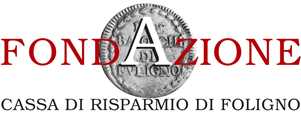Gino De Dominicis
Gino de Dominicis (Ancona, 1947 – Rome, 1998)
Gino de Dominicis, painter, sculptor, architect, Ancona 1947. His work is characterised by independence from the various currents in art that followed on one another after the war through to today. He exhibited his work for the first time in 1966 and then at several shows in Italy and abroad. By his own choosing, there are no catalogues or books about his work. To the photograph, he attributes no documentary value nor any value as a vehicle for publicising his works.’ (from the biographical note sent by the artist on occasion of the 1997 Venice Biennale).
A complex, radical personality, de Dominicis is one of the most emblematic and mysterious figures in contemporary Italian art. He debuted in the late 1960s with works in which he combined various techniques for expression and he consistently refused to associate himself with any precise historic-artistic movement. With perturbing irony that makes use of citation and appropriation, the artist subtly disputed the art of his time.
His research was rooted in history (as is evinced by his recovery of the Sumerian Gilgamesh epic) and he brings his reflections to bear on such existential themes as the enigma of life and death.
In an ideal attempt to arrest time’s irreversibility, his works live in ambivalence, in the space between contingency and spirituality, and imbibe and play on the power of the illusion, such as when they propose to achieve impossible goals: immortality, invisibility or the Tentativo di far formare dei quadrati invece che dei cerchi attorno a un sasso che cade nell’acqua (‘Attempt to form squares instead of circles around a stone falling into water’) (1971).
Beginning in the 1980s, de Dominicis devoted his energies entirely to painting, producing canvases dominated by hermetic figures: ‘drawing, painting, sculpture: these are not traditional forms of expression; they are, rather, native, primary, and therefore also of the future.’
Per la “Calamita Cosmica” si ringrazia la Fondazione Cassa di Risparmio di Foligno
















